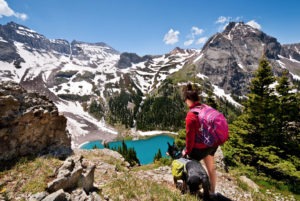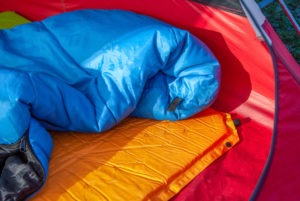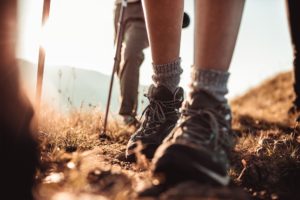For treks and adventures that require you to carry more gear than can easily be fit into your pockets, a daypack is great to have. Daypacks come in a variety of shapes, sizes, colors and prints and deciphering between the countless options can be quite daunting. What makes the best daypack? To narrow down your decision, take a look at the key factors that should be considered when purchasing a new day pack.
Daypack Size

There are two measurements to be aware of when choosing a new daypack – torso length and capacity. Daypack capacity is measured in liters and typically ranges from 10 liters to as much as 70 liters. Depending on where you plan to take your pack, the capacity needed will vary. For day hikes, 30 to 40 liters will be plenty. This will comfortably pack the essentials – food, water, first-aid kit, rain jacket and a fleece. For climbing and ski touring, a minimum of 40 liters is recommended to carry your necessary gear plus any extra clothing. If trail running or racing is your thing, staying light is key and you should try to find a pack under 20 liters to minimize bulk and weight.
The torso length of a daypack is extremely important to ensure that the pack fits you well. Almost all quality daypacks will have a hip belt to distribute the load evenly between your hips and shoulders. If the hip belt does not fit correctly, the weight distribution will be off. This can lead to discomfort and even pain on extended trips. Women should try to stick to a daypack designed specifically for a women’s frame to ensure a comfortable fit. Most vendors will report a range of torso lengths that a specific pack is designed to fit.
To find your torso length, have a friend measure the distance from the top of your shoulder to the highest part of your hip bone, known as the iliac crest. Then make sure your torso length is within the given torso range for a daypack to make sure you get the proper fit.
Panel Loading vs Top Loading Daypacks
Top-loading packs have one large compartment that is typically secured by a drawstring opening and flap at the top of the pack. are typically much larger and simpler in design than panel loader. They are easier to load to capacity and can even be stuffed beyond the stated capacity. Cinch straps on the sides and top allow for gear to be compressed when the pack is not filled to the brim. The downside is that everything is in one large compartment, so keeping your gear organized and easily accessible can be a chore.
Panel loaders are similar to a school backpack with a large top loading zippered compartment. Multiple compartments inside and outside differentiate panel loaders. The contents can easily be organized and accessed, making top loaders the most popular style of daypacks.
Hands-Free Hydration
With the countless features in today’s daypacks, perhaps the most important one is support for a hydration system. If you will be using the daypack for climbing, trail running, skiing or any other activity where you’ll get thirsty, you should consider dropping in on a hydration pack. These packs are compatible with a bladder inserted into it’s own pocket against the interior back of the pack. There is also a hose which clips to the shoulder strap for hands-free hydration. This system is nice if you don’t want to fumble around with a water bottle while running, hiking, wearing gloves or hanging on to the side of a mountain. They also make it much easier to carry more water since the bladder compresses as the water is drank. Hydration specific packs come with a bladder and hose, but many daypacks are hydration compatible (bladder and hose sold separately).
A Few of our Favorite Hiking Daypacks
 Dakine Session Hydrator Daypack
Dakine Session Hydrator Daypack
The best part about this daypack is the 2L reservoir with Quick Disconnect hose will keep you hydrated for 10-20 miles. Great for few hours on your mountain bike or old school hike trip. Breathable DriMesh® back panel and shoulder straps. Armor carry straps. Padded MP3 pocket
 Patagonia Refugio Backpack Lemon Lime
Patagonia Refugio Backpack Lemon Lime
The Refugio is one of Patagonia’s best selling daypacks! We love the compression straps, the insulated-hydration reservoir and DWR finish. Great as a school backpack or quick hiking daypack. Air-flow mesh back panel and shoulder straps. Padded compartment good for a 17-inch laptop. Microfleece-lined pocket for sunglasses and electronics.
Comes in Grecian Blue, Black, Forest Glen, Deep Mango

The North Face Recon Backpack
Most likely made for urban adventures, but it is equipped with enough technical features to let it double as a bona fide hiking daypack/backpack.
Large main compartment with padded laptop sleeve and hydration clip/port
Padded Airmesh back panel with Spine Channel








Hands-free hydration is a feature you can’t do without if you are using your daypack for hiking. It saves you considerable time and energy if you don’t have to take out a water bottle every time you are thirsty.